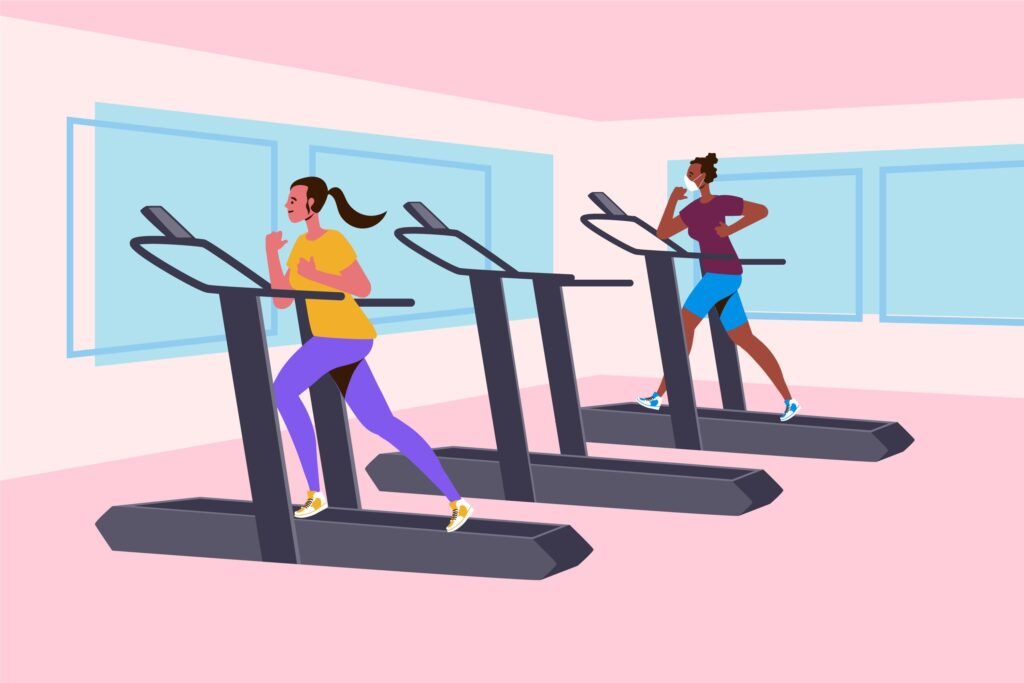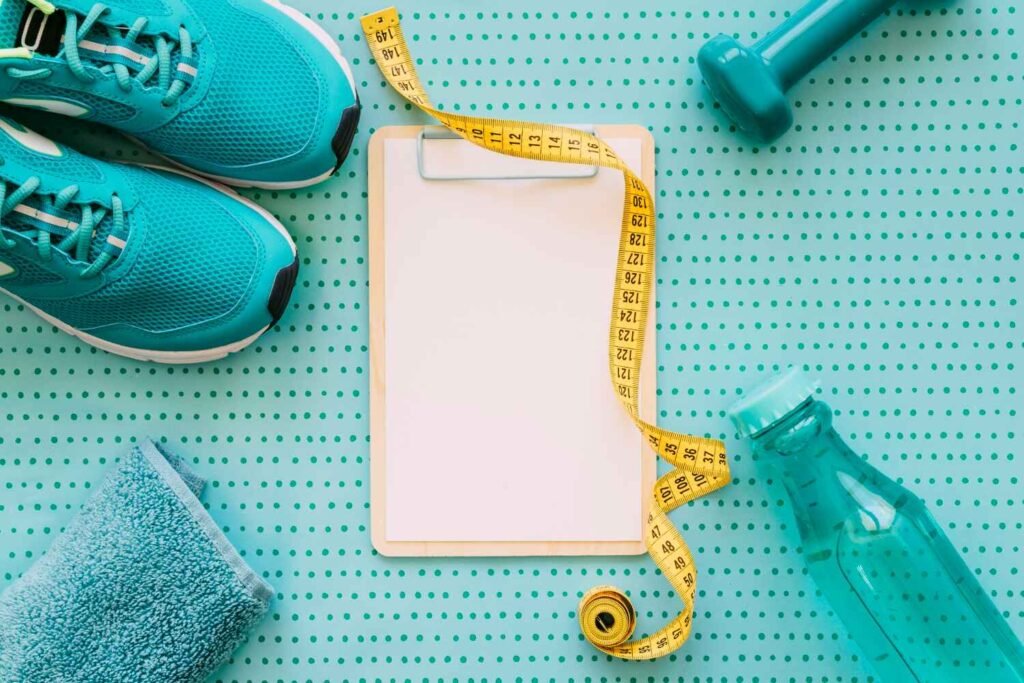
Breathwork Techniques for Anxiety and Emotional Regulation
Anxiety and emotional dysregulation can significantly impact our daily lives, leaving us feeling overwhelmed and disconnected. Breathwork offers a powerful, natural way to calm the mind, reduce stress, and regain emotional balance. This article delves into how breathwork can help and introduces techniques you can start practicing today.
Understanding Breathwork: A Pathway to Calmness
Breathwork is the practice of using intentional breathing patterns to influence your mental and physical state. It’s more than just taking deep breaths—it’s a focused, deliberate practice that can engage the parasympathetic nervous system, which promotes relaxation and emotional stability.
Many ancient traditions, such as yoga and meditation, have used breathwork for centuries, and modern science now supports its effectiveness in reducing anxiety, improving mood, and fostering emotional well-being.
How Does Breathwork Help with Anxiety?
- Activates the Relaxation Response:
Anxiety often triggers the “fight or flight” response, leading to shallow and rapid breathing. Breathwork helps counteract this by slowing your breath, signaling to the brain that it’s safe to relax. - Balances Oxygen and Carbon Dioxide Levels:
Proper breathing ensures optimal oxygen delivery to the brain and body, which can improve clarity and reduce symptoms of anxiety. - Enhances Emotional Awareness:
By focusing on your breath, you become more present, allowing you to process emotions without becoming overwhelmed.
Top Benefits of Breathwork for Emotional Regulation
- Reduces Cortisol Levels: Breathwork helps lower stress hormones, making you feel calmer.
- Improves Heart Rate Variability (HRV): A higher HRV is associated with better emotional resilience and adaptability.
- Encourages Mindfulness: Mindful breathing practices promote awareness of the present moment, reducing the hold of anxious thoughts.
Preparing for Your Breathwork Practice
Before diving into techniques, it’s essential to set the stage for effective practice. Here are some tips:
- Choose a Quiet Space: A calm, distraction-free environment enhances your focus.
- Adopt a Comfortable Position: Sit or lie down in a relaxed posture.
- Set an Intention: Whether you want to calm your mind or release pent-up emotions, setting a clear intention can make your practice more impactful.
Breathwork Techniques to Try
1. Diaphragmatic Breathing (Belly Breathing)
Purpose: Reduces physical tension and anxiety by encouraging deep, restorative breathing.
How to Do It:
- Sit or lie down comfortably.
- Place one hand on your chest and the other on your stomach.
- Inhale deeply through your nose, allowing your stomach to rise while keeping your chest still.
- Exhale slowly through your mouth, feeling your stomach fall.
- Repeat for 5–10 minutes.
2. 4-7-8 Breathing Technique
Purpose: Promotes relaxation by slowing the heart rate and calming the nervous system.
How to Do It:
- Inhale through your nose for a count of 4.
- Hold your breath for a count of 7.
- Exhale slowly through your mouth for a count of 8.
- Repeat for 4 cycles.
This technique is particularly effective before bedtime or during moments of heightened anxiety.
3. Box Breathing (Square Breathing)
Purpose: Enhances focus and emotional balance by creating a steady rhythm.
How to Do It:
- Inhale deeply through your nose for 4 seconds.
- Hold your breath for 4 seconds.
- Exhale slowly through your mouth for 4 seconds.
- Hold your breath again for 4 seconds.
- Repeat for several minutes.
Box breathing is popular among athletes and military personnel for managing stress and improving concentration.
4. Alternate Nostril Breathing (Nadi Shodhana)
Purpose: Balances the left and right hemispheres of the brain, fostering emotional stability.
How to Do It:
- Sit in a comfortable position with your spine straight.
- Close your right nostril with your thumb and inhale deeply through your left nostril.
- Close your left nostril with your ring finger and exhale through your right nostril.
- Inhale through your right nostril, then switch sides.
- Repeat for 5–10 minutes.
This practice is a cornerstone of yogic traditions and is known for its grounding effects.
5. Lion’s Breath (Simhasana)
Purpose: Releases built-up stress and fosters emotional release.
How to Do It:
- Kneel on the floor, sitting back on your heels.
- Place your hands on your knees, fingers spread wide.
- Inhale deeply through your nose, then exhale forcefully through your mouth while sticking out your tongue and making a “ha” sound.
- Repeat 3–5 times.
This technique may feel a bit dramatic, but it’s incredibly effective in letting go of emotional tension.
Advanced Breathwork Techniques for Deep Anxiety Relief
If you’ve practiced foundational techniques like diaphragmatic breathing or 4-7-8 breathing, you may be ready for advanced methods that provide deeper emotional release and long-lasting anxiety relief. These techniques can elevate your breathwork practice and help you develop greater resilience against stress.
6. Holotropic Breathwork
Purpose: Facilitates emotional release, self-discovery, and altered states of consciousness.
How to Do It:
- Lie comfortably on your back in a quiet room.
- Breathe rapidly and deeply through your mouth while keeping a steady rhythm.
- Focus on maintaining continuous breathing without pauses between inhales and exhales.
- Continue for 20–30 minutes or as guided by a trained facilitator.
Note: This intense practice may bring up deep emotions or memories. It’s best done with a certified practitioner, especially if you’re new to it.
7. Rebirthing Breathwork
Purpose: Releases suppressed emotions and trauma by reconnecting with subconscious experiences.
How to Do It:
- Lie on your back with your eyes closed.
- Take gentle, circular breaths through your nose, maintaining a continuous flow without holding your breath.
- Focus on relaxing your entire body and allowing emotions to surface naturally.
- Continue for 45–60 minutes with the support of a trained guide.
Rebirthing breathwork can help clear emotional blockages and promote inner healing.
8. The Wim Hof Method
Purpose: Reduces anxiety, boosts energy, and strengthens the immune system through breath control and cold exposure.
How to Do It:
- Breathing Phase:
- Take 30–40 deep breaths, inhaling fully through your nose and exhaling through your mouth.
- After the last exhale, hold your breath for as long as you can.
- When you feel the urge to breathe, inhale deeply and hold for 15 seconds.
- Repeat this cycle 3–4 times.
- Cold Exposure:
- After the breathing exercises, gradually expose yourself to cold showers or ice baths.
This method is scientifically proven to reduce inflammation and improve emotional resilience.
Tips for Integrating Breathwork into Daily Life
Breathwork is most effective when practiced consistently. Here are some practical ways to make breathwork part of your daily routine:
- Morning Ritual:
Start your day with 5–10 minutes of diaphragmatic or box breathing to set a calm and focused tone. - During Stressful Moments:
Use the 4-7-8 technique whenever you feel anxiety rising, whether you’re at work, in traffic, or dealing with a challenging situation. - Bedtime Wind-Down:
End your day with alternate nostril breathing to calm your mind and prepare for restful sleep. - Midday Reset:
Take a 5-minute breathwork break during lunch to recharge your energy and clear your mind.
Creating a Breathwork Space at Home
A dedicated space can enhance your breathwork practice. Consider these tips for setting up a calming environment:
- Choose a Quiet Corner: Pick a spot where you won’t be disturbed.
- Add Comfort: Use cushions, a yoga mat, or a blanket for support.
- Incorporate Aromatherapy: Essential oils like lavender or peppermint can promote relaxation.
- Soft Lighting: Dim lights or candles can create a soothing atmosphere.
- Play Gentle Music: Ambient sounds or nature tracks can help you focus.
Combining Breathwork with Other Techniques for Emotional Regulation
Breathwork is even more powerful when paired with complementary practices. Consider integrating these methods to enhance your emotional well-being:
1. Mindfulness Meditation
Focus on your breath while observing your thoughts without judgment. This combination promotes greater awareness and reduces anxiety.
2. Yoga
Yoga postures (asanas) combined with breathwork help release physical tension and improve emotional balance.
3. Journaling
After breathwork, write down any thoughts or emotions that arise. This practice can help you process feelings and gain clarity.
4. Progressive Muscle Relaxation (PMR)
Combine PMR with deep breathing to systematically relax each muscle group, releasing stored tension.
5. Visualization
During breathwork, visualize calming scenes or positive outcomes to reinforce a sense of peace and control.
Overcoming Common Challenges in Breathwork Practice
1. Restlessness or Impatience
- Solution: Start with shorter sessions (2–3 minutes) and gradually increase the duration as you become more comfortable.
2. Racing Thoughts
- Solution: Gently bring your focus back to your breath whenever your mind wanders. Use a simple mantra like “inhale calm, exhale stress.”
3. Physical Discomfort
- Solution: Adjust your posture or practice lying down if sitting feels uncomfortable. Ensure your body is relaxed and supported.
4. Difficulty Maintaining Consistency
- Solution: Schedule breathwork sessions into your calendar as non-negotiable appointments. Even 5 minutes a day can make a difference.
The Science Behind Breathwork and Emotional Health
Research supports the powerful effects of breathwork on anxiety and emotional regulation. Here are some key findings:
- Reduced Cortisol Levels: Studies show that slow, deep breathing lowers cortisol, the primary stress hormone.
- Improved Vagal Tone: Breathwork enhances the activity of the vagus nerve, promoting a state of relaxation and improved heart rate variability (HRV).
- Enhanced Brain Function: Regular breathwork increases oxygen flow to the brain, improving focus, clarity, and emotional resilience.
- Decreased Symptoms of Anxiety Disorders: Breathwork has been found to reduce symptoms of generalized anxiety disorder (GAD), panic attacks, and PTSD.
Making Breathwork a Lifelong Habit
Consistency is key to reaping the full benefits of breathwork. Here are a few strategies to make it a lasting part of your life:
- Track Your Progress: Keep a journal to note how you feel before and after each session.
- Join a Community: Participate in breathwork classes or online groups for motivation and support.
- Stay Curious: Explore new techniques and practices to keep your sessions engaging.
- Practice Gratitude: Reflect on how breathwork improves your life, fostering appreciation and motivation.
Real-Life Success Stories: How Breathwork Transformed Anxiety and Emotional Health
Breathwork has the power to create profound changes in people’s lives. Here are a few inspiring success stories that illustrate how intentional breathing practices can help manage anxiety and improve emotional regulation.
1. Sarah’s Journey from Panic to Peace
Sarah, a 34-year-old marketing executive, experienced frequent panic attacks due to work-related stress. She felt overwhelmed and disconnected from herself. After discovering the 4-7-8 Breathing Technique, Sarah practiced it for 10 minutes every morning and during stressful moments. Within a month, her panic attacks decreased significantly, and she felt more in control of her emotions.
Sarah’s Tip: “Whenever anxiety creeps in, I use 4-7-8 breathing to ground myself. It’s a simple technique that brings me instant relief and clarity.”
2. David’s Experience with the Wim Hof Method
David, a 40-year-old fitness enthusiast, struggled with chronic stress and low energy levels. He incorporated the Wim Hof Method into his daily routine, combining breathwork with cold showers. The results were transformative: his stress levels dropped, his energy surged, and he felt emotionally resilient.
David’s Tip: “Breathwork and cold exposure push me beyond my mental limits. I feel stronger, calmer, and ready to face challenges.”
3. Maria’s Emotional Healing through Rebirthing Breathwork
Maria, a 28-year-old artist, carried unresolved trauma from her childhood. Traditional therapy helped, but she needed a deeper emotional release. Guided by a practitioner, Maria engaged in Rebirthing Breathwork, which allowed her to confront and process her emotions safely. She reported feeling a sense of freedom and lightness she hadn’t experienced in years.
Maria’s Tip: “Rebirthing breathwork helped me release years of pent-up emotions. It’s intense but incredibly liberating.”
Expert Advice on Breathwork for Anxiety
Leading experts in breathwork and mental health emphasize the importance of regular practice and mindful execution. Here are insights from experts:
1. Dr. Andrew Weil, Integrative Medicine Expert
“Breathing is the simplest and most powerful tool we have to control anxiety. Techniques like 4-7-8 breathing can activate the body’s relaxation response and are effective in reducing anxiety in just a few minutes.”
2. Dan Brulé, Breathwork Specialist
“Breathwork is about learning to manage your state of mind and emotions by controlling your breath. Consistent practice helps you become more resilient to stress.”
3. James Nestor, Author of Breath
“Our modern way of breathing—shallow and fast—contributes to anxiety. Returning to slow, deep, and intentional breaths can transform both physical and mental health.”
Common Myths About Breathwork and the Truth Behind Them
Despite its growing popularity, some misconceptions still surround breathwork. Let’s bust a few myths and clarify the facts.
Myth 1: Breathwork Is Just Deep Breathing
Truth: Breathwork is more than simply taking deep breaths. It involves specific patterns, rhythms, and techniques designed to influence your mental and physical state.
Myth 2: Breathwork Takes a Lot of Time
Truth: Even 2–5 minutes of breathwork can reduce anxiety and improve emotional regulation. You don’t need to spend hours to experience benefits.
Myth 3: Breathwork Is Only for Yoga Practitioners
Truth: Breathwork is accessible to everyone, regardless of fitness level or experience. Anyone can benefit from it, from office workers to athletes.
Myth 4: Breathwork Doesn’t Have Scientific Support
Truth: Numerous studies confirm that breathwork reduces cortisol, improves heart rate variability, and enhances mental well-being.
How to Overcome Resistance and Stay Consistent
Building a habit of breathwork can be challenging, especially when life gets busy. Here are strategies to help you stay committed:
- Start Small: Begin with 2-minute sessions and gradually increase the time. Small wins can build momentum.
- Pair Breathwork with Existing Habits: Link your practice to activities you already do, such as after brushing your teeth or before bed.
- Set Reminders: Use phone alarms or sticky notes as prompts to practice breathwork daily.
- Track Your Progress: Keep a log of how you feel before and after each session. Seeing improvements can motivate you to continue.
- Join a Group or Class: Community support can keep you accountable and provide encouragement.
- Reward Yourself: Celebrate milestones in your breathwork journey, such as completing a 30-day challenge.
Additional Resources to Deepen Your Practice
If you’re eager to explore breathwork further, here are some valuable resources to guide you:
- Books:
- “Breath: The New Science of a Lost Art” by James Nestor
- “The Healing Power of the Breath” by Dr. Richard Brown and Dr. Patricia Gerbarg
- Apps:
- Breathwrk: Offers guided breathwork sessions for anxiety, sleep, and energy.
- Calm: Includes breathwork exercises for relaxation and mindfulness.
- Online Courses:
- Platforms like Udemy and Insight Timer offer comprehensive breathwork courses for all levels.
- YouTube Channels:
- Explore channels by breathwork experts like Wim Hof or Dan Brulé for free tutorials.
Your Breathwork Journey: A Lifelong Tool for Emotional Well-Being
Breathwork is not a quick fix—it’s a lifelong tool that empowers you to manage anxiety, regulate emotions, and find inner peace. The beauty of breathwork lies in its simplicity and accessibility. You carry this tool with you wherever you go, ready to use whenever life feels overwhelming.



